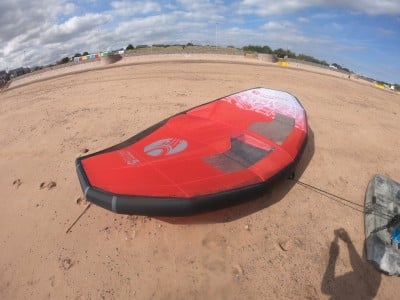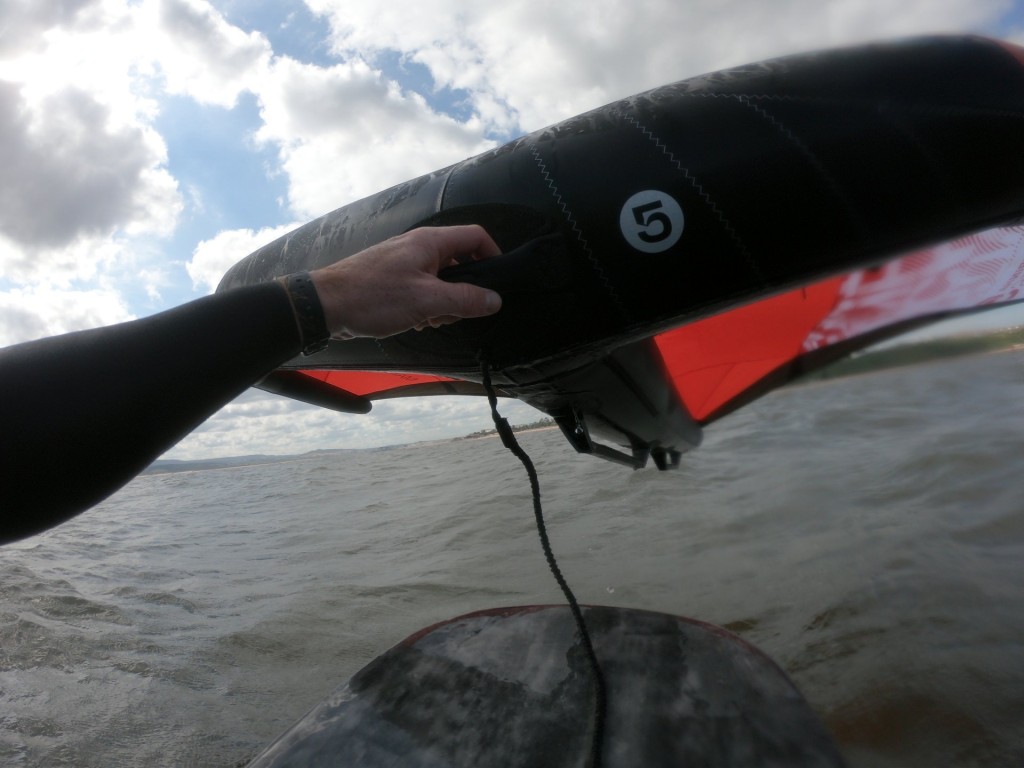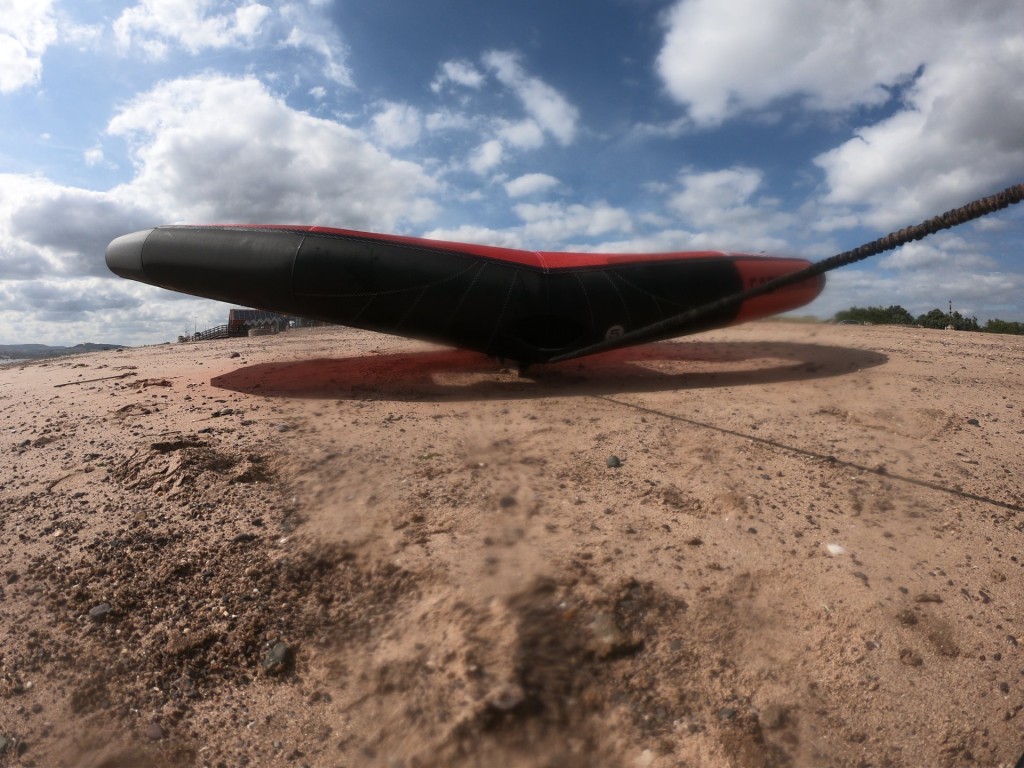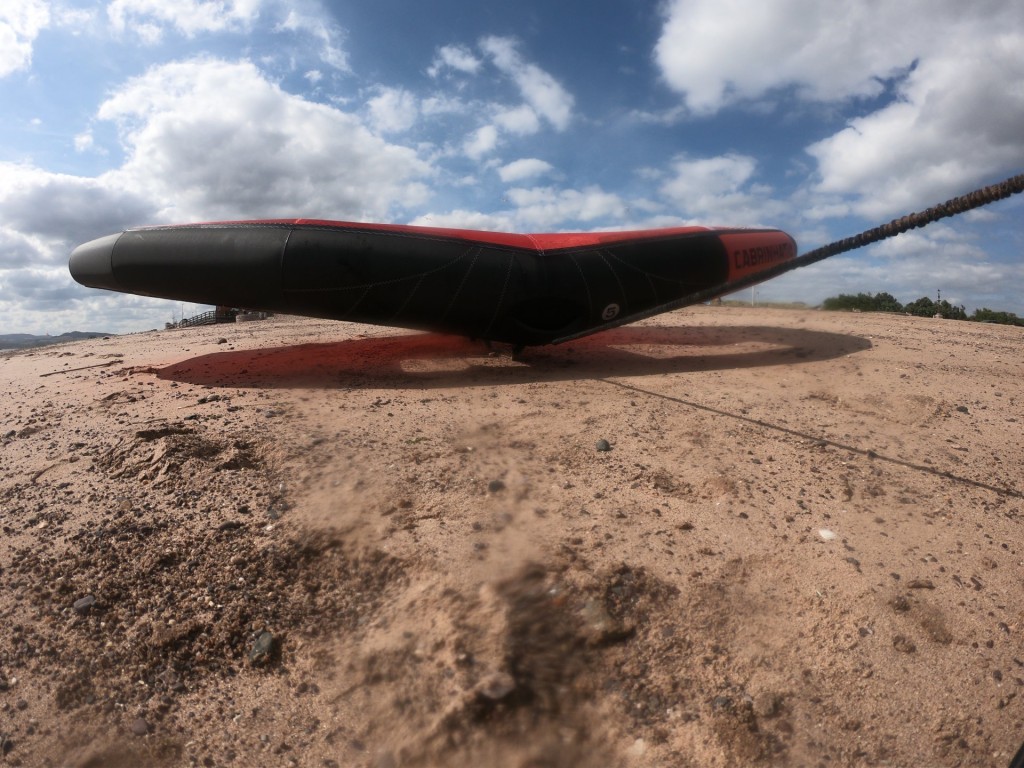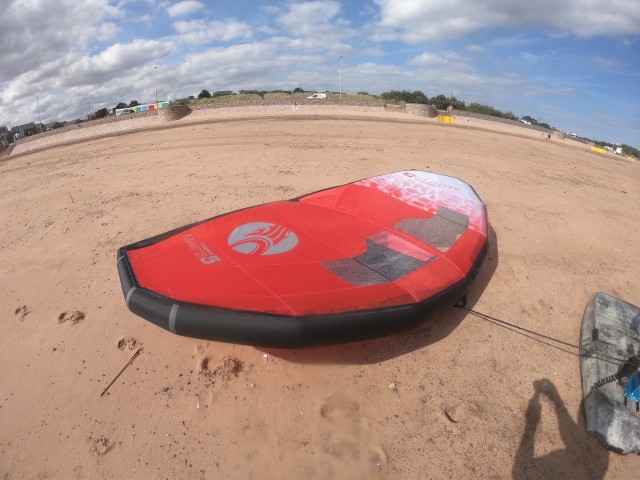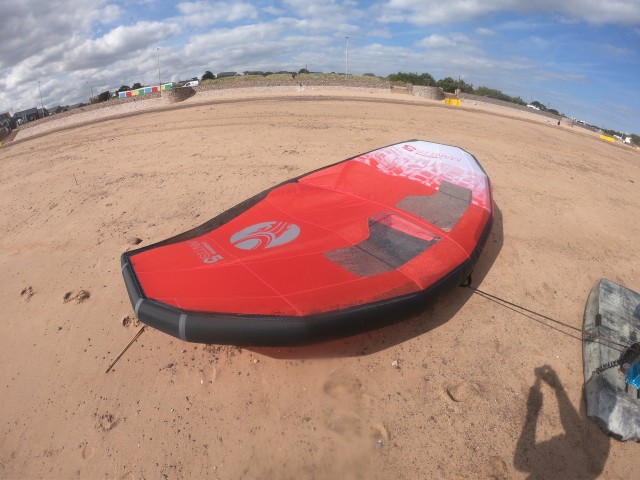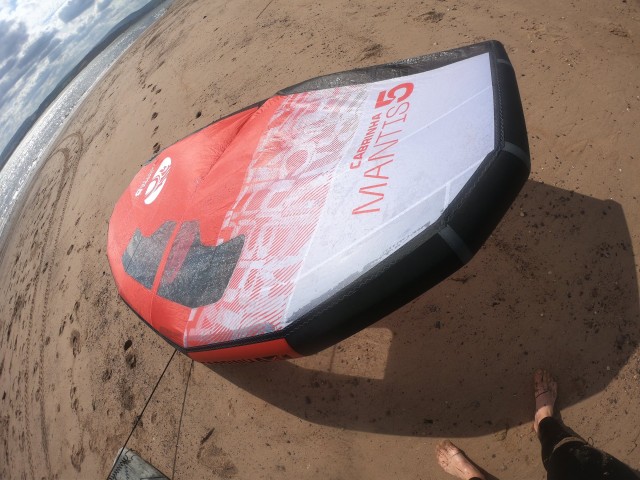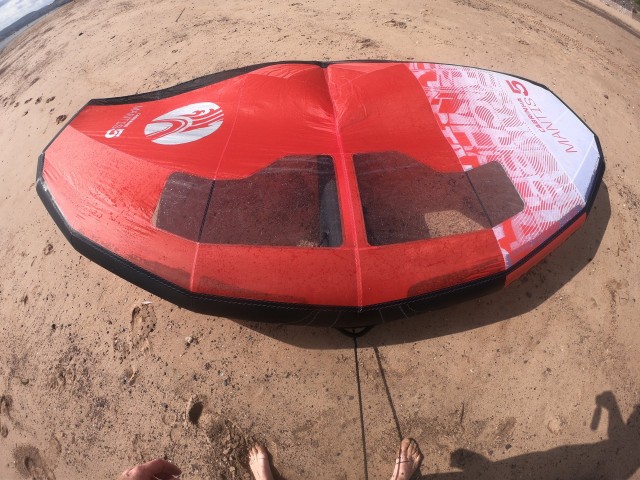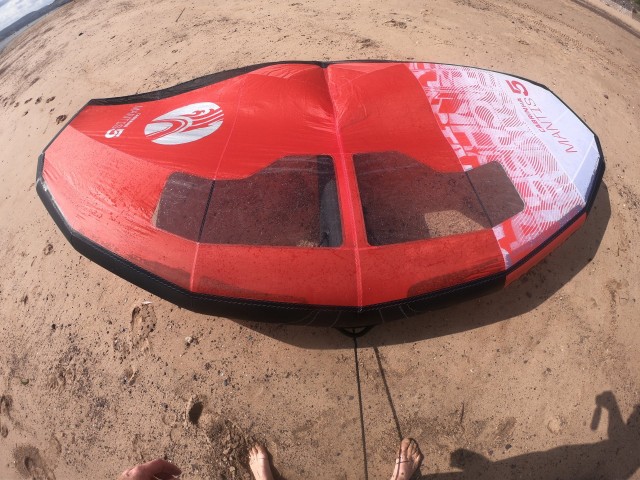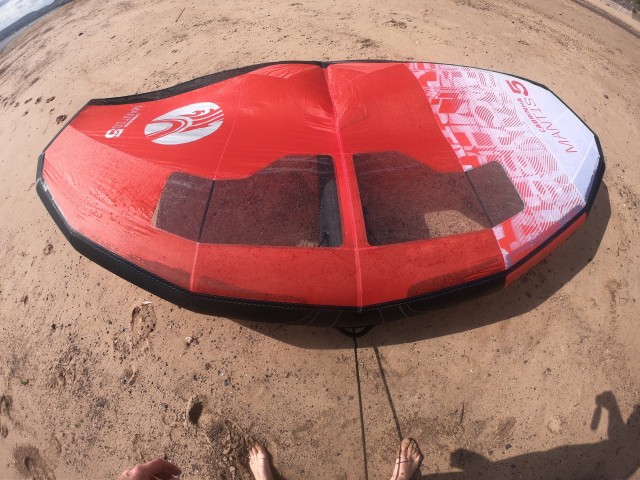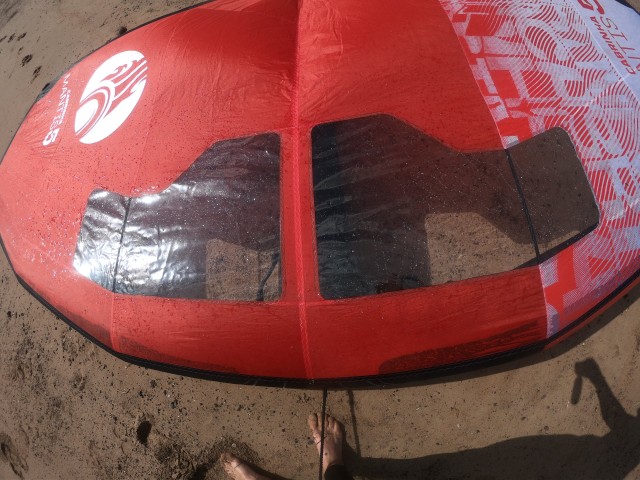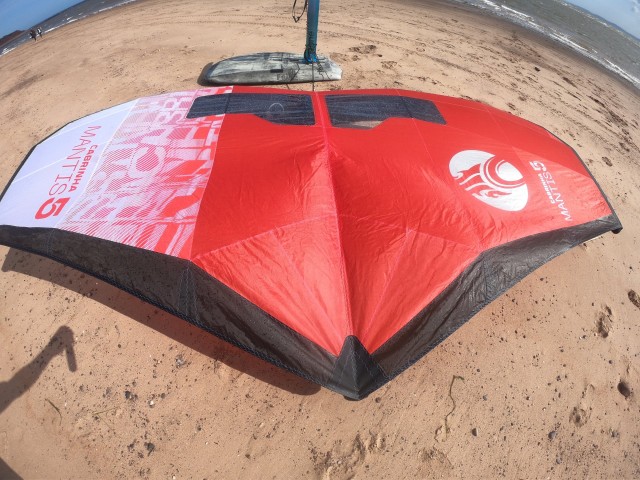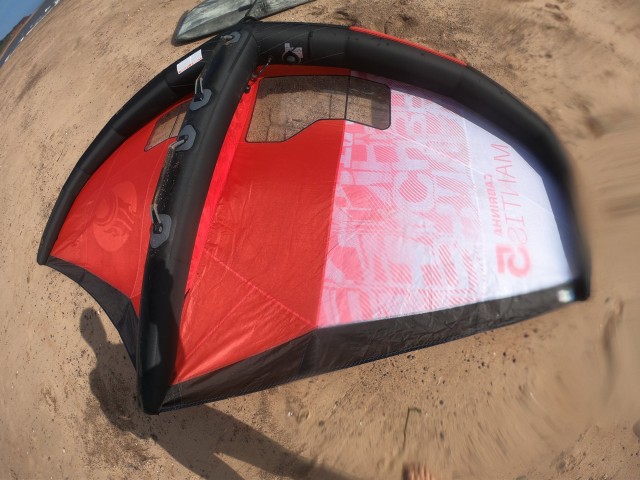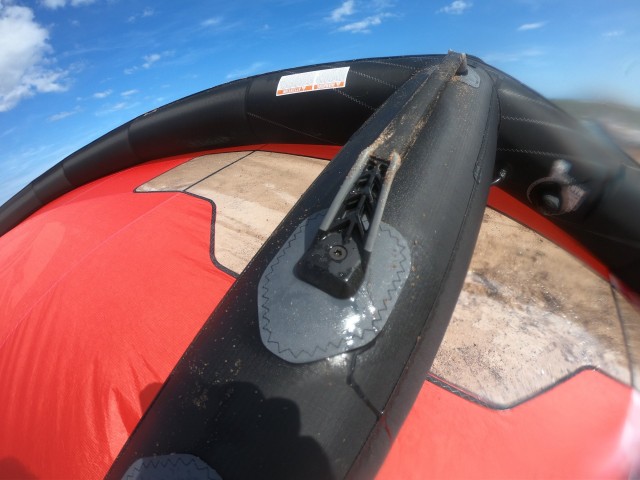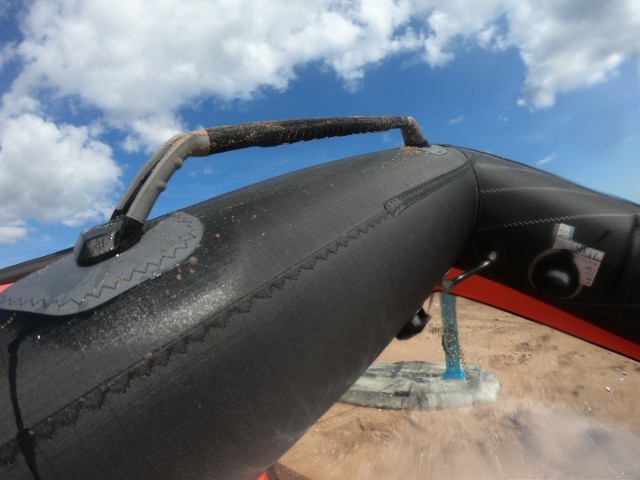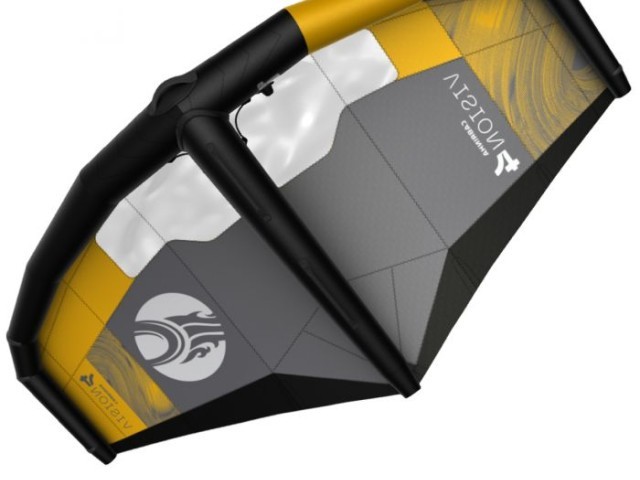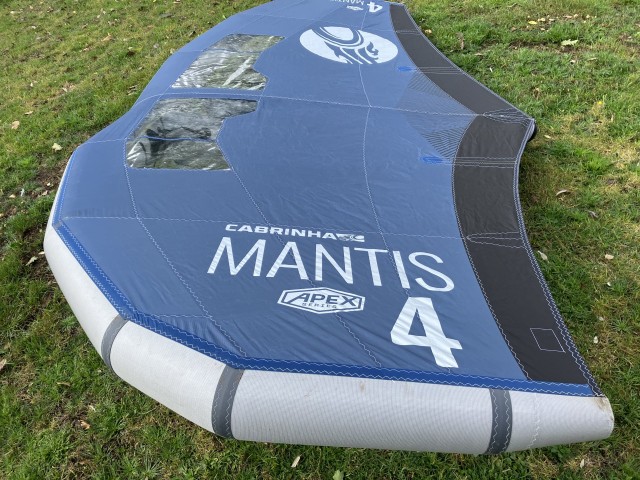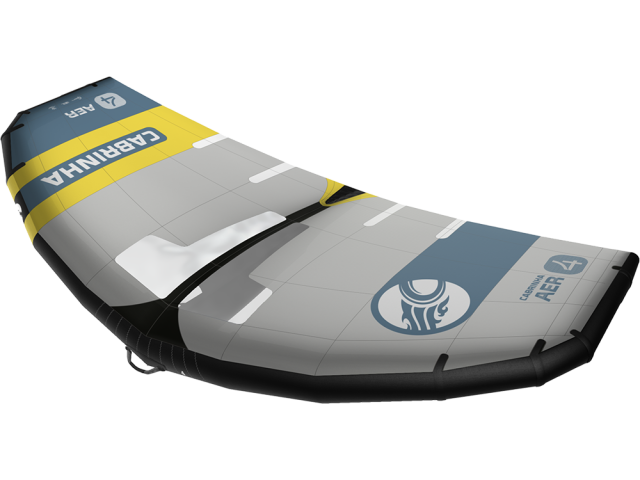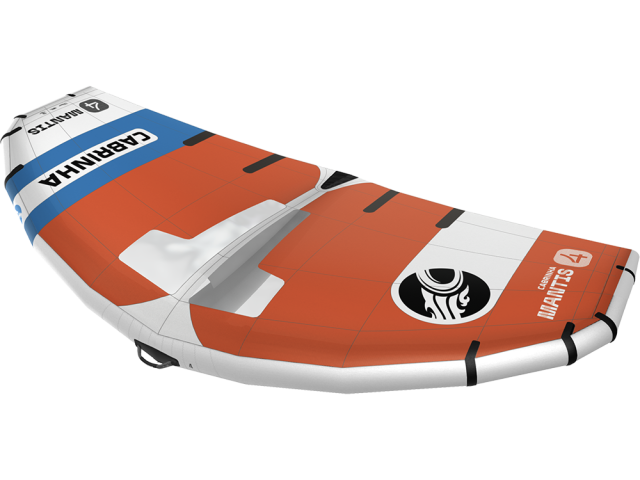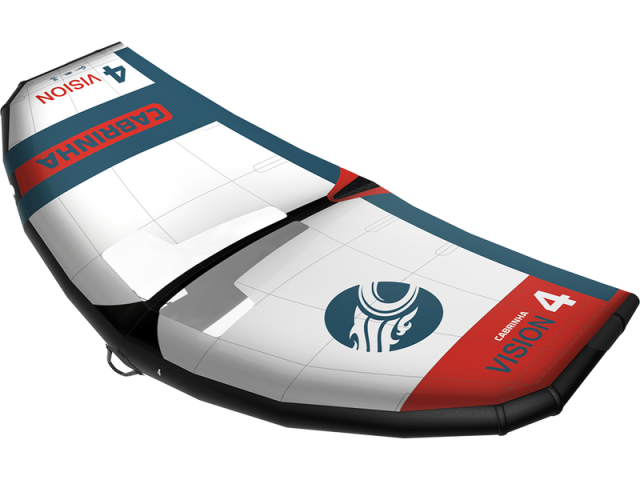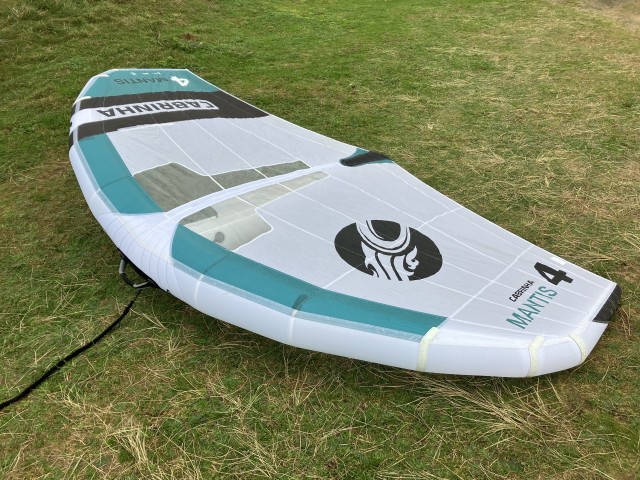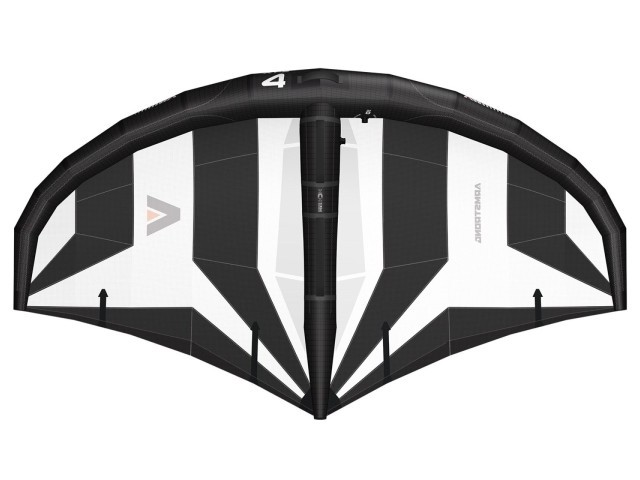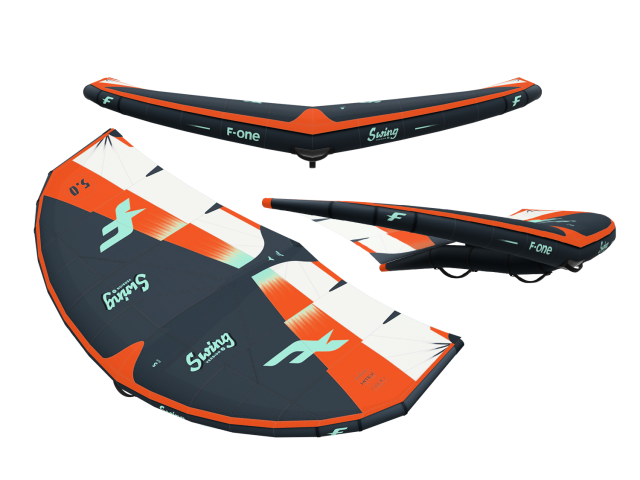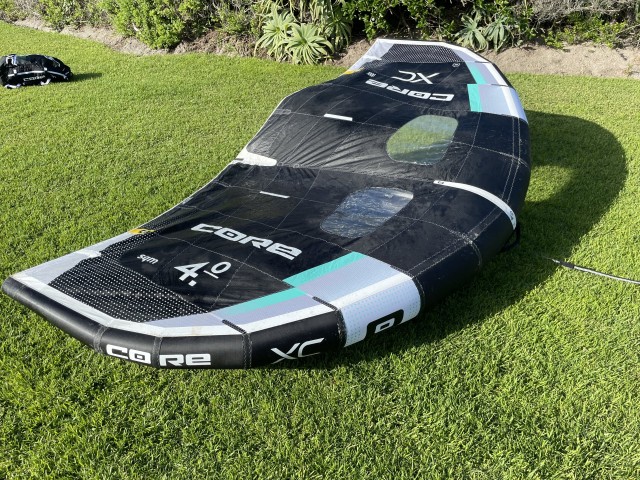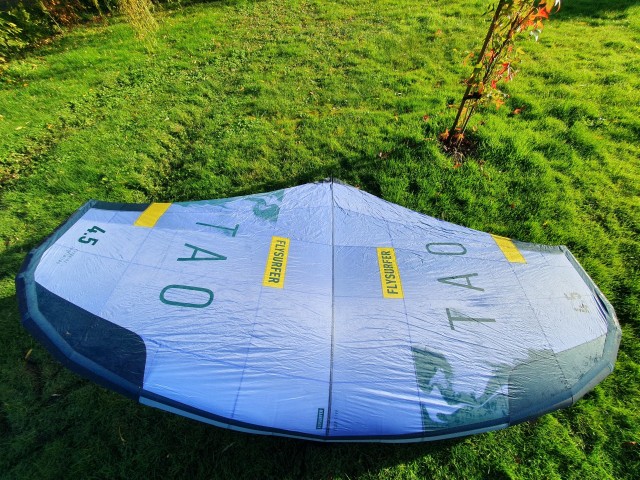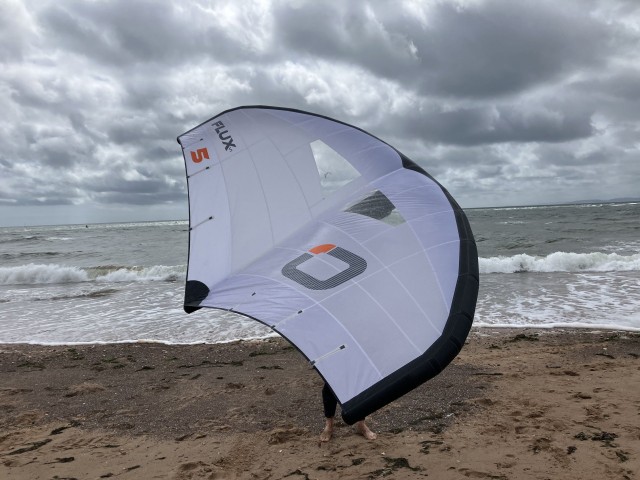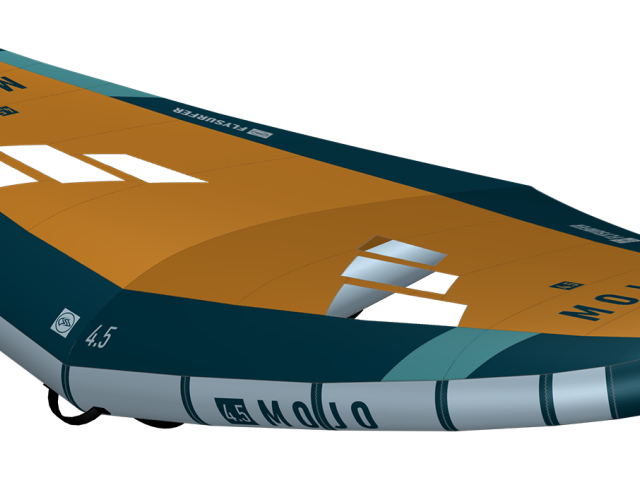The Mantis is the wing most synonymous with Cabrinha, and the previous two versions have acquired many loyal fans over the years. It has always been an easy to use wing that aims to provide high levels of accessible performance for all disciplines. Having spent a good amount of time on the second version, I was looking forward to seeing the improvements that come with the ‘03’ collection Mantis.
At a glance
The new Mantis comes with quite a few changes this year. It has a mid aspect ratio outline with squared off wing tips and a lower dihedral than Cabrinha’s Vision, for example. The attention to detail in an effort to further increase the Mantis’ power delivery is obvious. To optimise the central section of the leading edge, there is a very high panel count around the depower handle, which smooths both the leading edge arc/outline and smooths the dihedral transition. Leading edge seam protectors are only placed where they are needed, near the wing tips, to keep the profile as smooth as possible and reduce weight. As with all of the Cabrinha ‘03’ products, the leading edge seam protection, which is present nearer to the wing tips, is extremely sleek and aerodynamic.
The Mantis features Cabrinha’s new ‘composite widespan handles’. I had to do a bit of digging to confirm the details of their construction. It doesn’t surprise me that they’re keeping it a little secret, as they are one of the standout highlights of all the ‘03’ collection Cabrinha wings this year. They feature a TPU/TPE covered alloy core that is then finished with an EVA grip. Thanks to this construction method (and Cabrinha not having prioritised carbon handles, which inherently limit the geometry of design without spending crazy $$$), they had full freedom to make a very ergonically shaped handle. Don’t worry, they are still lightweight and stiff thanks to the efficient use of material to reinforce the handle load paths.
Each wing comes with the handles packed separately in the bag for efficient shipping and also includes handle riser adjusters, which are like washers to fine tune the height of attachment of the handle to the strut (and therefore the angle of the whole handle if you use a riser on one end and not the other). The already ergonomic design, along with the adjustability, should please all users. The depower handle has also had a rework. Cabrinha now calls it the ‘pure impulse front handle’. It is semi rigid (stiffer than the V2) and definitely allows you to give the wing more input from the wrist while flagging to put the Mantis exactly where you want it.
The new Mantis has a significantly different canopy layout from the V2 model. Whilst it used to have straight cut canopy panels running side by side all the way from the leading edge to the trailing edge, it now has a load path panel layout. This has been carefully designed to help mitigate the varying loads and elongation that occur on wings. This is intended to keep the profile cleaner, deliver more reactive performance and keep the wing behaving itself in an even greater wind range (in our experience, it should go a long way to improve the performance lifespan of the wing too). The Mantis features very generous windows, approximately in line with the front handle, which are manufactured from a low stretch, weather resistant TPU material. Without getting too scientific, the low glare window material definitely feels lightweight and pliable, and the visibility is very good.
I think it is worth noting that the ‘03’ Cabrinha wings do not include a leash as standard, so you’ll have to remember to source and fit one before hitting the water.
Sizes: 2m, 2.5m, 3m, 3.5m, 4m, 4.5m, 5m ,6m, 7m
On the water
The new Mantis is a bit of a powerhouse and sure to please any rider that seems to need that bit of extra help getting going and up on foil. The lower dihedral design means the Mantis has an increased canopy frontal area when being used to get up on foil, and this, in combination with the powerful profile, is really noticeable. The canopy is stiff, and so are the new hard handles, which make pumping very easy and controlled. Once up on foil, the Mantis gets upwind quickly. The ergonomic notches on the handles make it very easy to adjust your hand positions on the handles to get dialled in and make sure you’ve got a balanced power delivery between the front and back hands. I appreciated the notches most when choosing to hold the handle close to one end. They make your hand feel secure in position rather than feeling like it should be back towards the middle.
When engaging the depower handle to luff the wing and surf, two things were noticeable. The Mantis feels very light and the new ‘pure impulse handle’ does provide an extra element of control you wouldn’t have known you were missing before. The lightweight nature of the wing when flagging would suit multiple styles of wave riding. Even in onshore conditions, if you wanted to keep the wing in front of you and swap hands as you carve from toes to heels, it was easy to control the roll of the wing using the stiffened front handle and the wing felt light passing it from one hand to the other. If you committed to the wave and nudged the wing behind you in onshore conditions, the Mantis excelled. Not only was it easy to get it behind you when initiating a turn, but it was quite happy to stay there even without too much board speed if you kept your hand low. The flatter dihedral means there is less drag to this sweeping yaw motion, so it is easy to move it around the rider in the first place and easy to get it back in front of you when you want to re-engage and ride off.
The new composite widespan handles are a pleasure to use. The central section of the handle has nice ridges to wrap your fingers around, while either end of the handle where it attaches to the strut is perfectly curved to nestle your hand into and wrap your thumb around the end when controlling the wing with one hand. I found myself flying the wing with one hand so much more than usual and noticing many situations where that extra little bit of control made life easier. You could also easily ride waves in light wind on shore conditions this way, using the front handle instead of the depower handle. This would give you an extra bit of power to keep you on the wave, and extra authority over the wing's position. It also meant you were one quick movement away from powering back up at any point… a great way for riders new to catching waves to progress. All in all, as a rider who is fairly indifferent between hard/soft handles, never uses a harness, and rides with a fairly open grip (handle resting between the first and second joint of the fingers), these were some of the most comfortable and grippy handles that I’ve used!
Summary
The Mantis V3 retains the same personality as its predecessor, but with a good number of upgrades to make this lively all rounder even better. Construction upgrades have reduced the weight, a canopy layout overhaul has increased the stiffness and likely lifespan of the wing and the new handles have significantly improved comfort and control. The Mantis has the potential to be a lot of wings for a lot of different riders. It has the low end and stability to please newcomers and get experienced riders out in low winds. It has forward drive and available speed to keep enthusiastic riders and freestylers/jumpers entertained, and it has the composure to perform in a variety of wave riding conditions.
Videos
This review was in Issue 17 of Tonic Mag.
For more information visit CabrinhaRelated
By Liam Proctor


